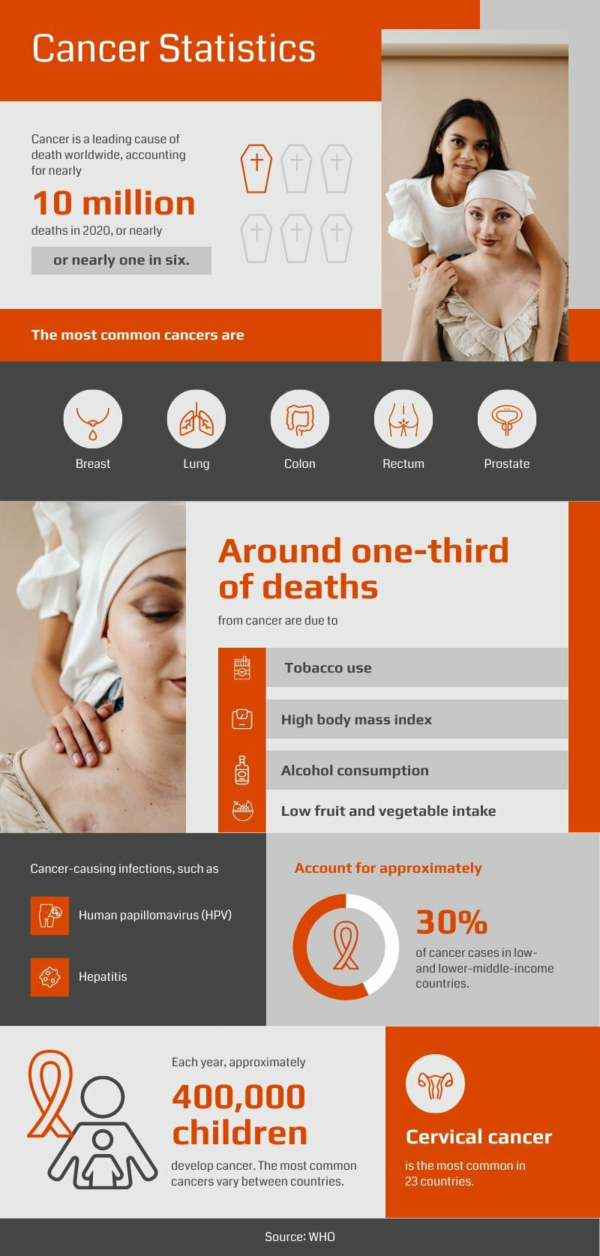
Cancers Statistics
Edit for freeYou'll be asked to log in or sign up for a free Piktochart account first.
Understanding and presenting cancer statistics is crucial for healthcare professionals, researchers, and policymakers. Here are five key points to guide you in effectively dealing with cancer statistics: Data Collection: Begin by collecting reliable and up-to-date cancer data from reputable sources such as the World Health Organization (WHO), the Centers for Disease Control and Prevention (CDC), or national cancer registries. Ensure that the data covers the specific type of cancer and the population you are interested in. Data Analysis: Once you have the data, conduct a thorough analysis. Calculate essential statistical measures such as incidence rates, mortality rates, survival rates, and prevalence. These measures provide insights into the occurrence, impact, and outcomes of cancer in a given population. Visualization: Use charts, graphs, and visual aids to present the statistics effectively. Visual representations make complex data more accessible and comprehensible. Common types of visualizations for cancer statistics include bar charts, line graphs, and pie charts. Interpretation: Interpret the statistics to draw meaningful conclusions. Identify trends, patterns, and variations in the data. Assess factors that may contribute to these trends, such as age, gender, geographic location, or risk factors. Ensure that your interpretations are based on sound statistical analysis. Communication: Communicate the cancer statistics clearly and concisely. Whether you are preparing a report, presentation, or educational materials, use plain language and avoid jargon. Provide context for the statistics and explain their significance in a way that the intended audience can easily grasp. In summary, dealing with cancer statistics involves data collection, analysis, visualization, interpretation, and effective communication. By following these key points, you can work with cancer statistics to better understand the disease's impact, trends, and implications for public health and healthcare decision-making.
Available File Type
Customization
100% customizable